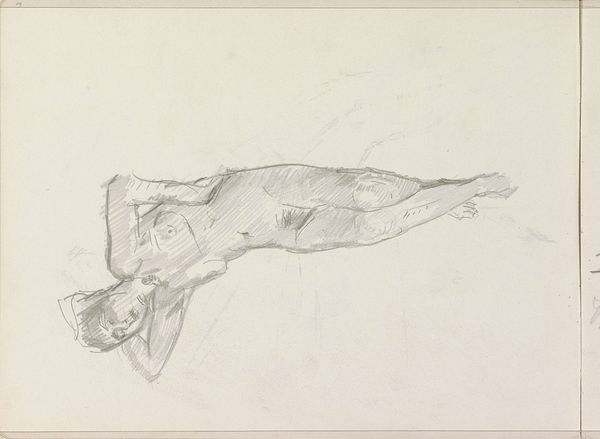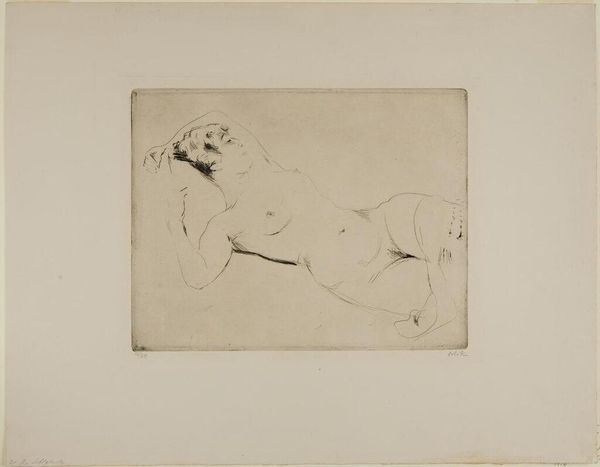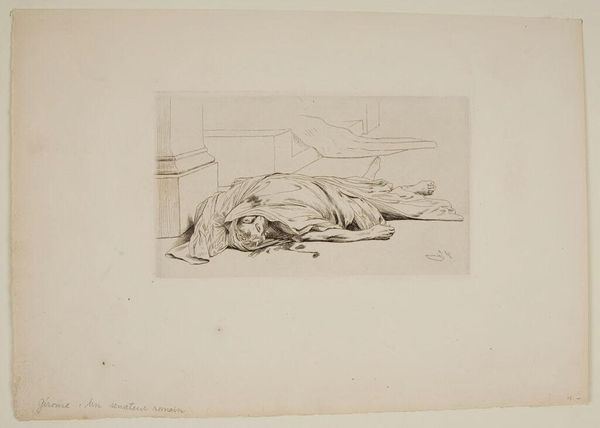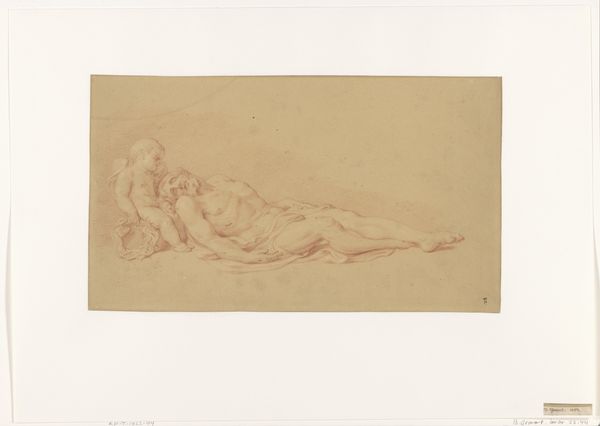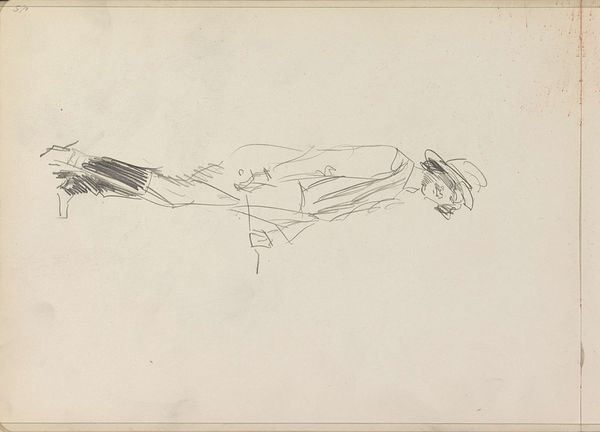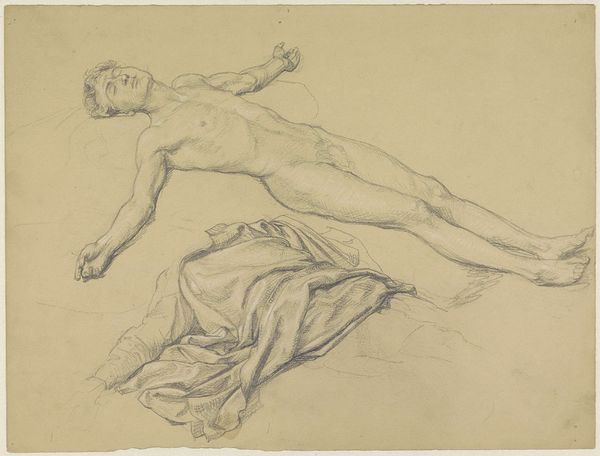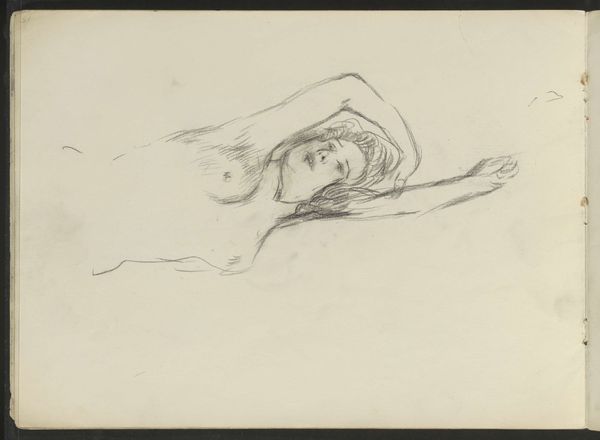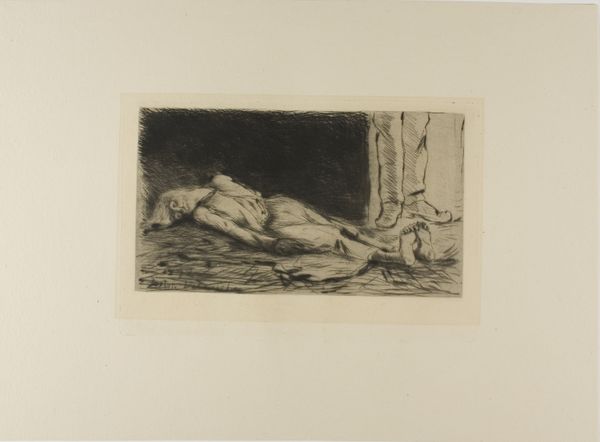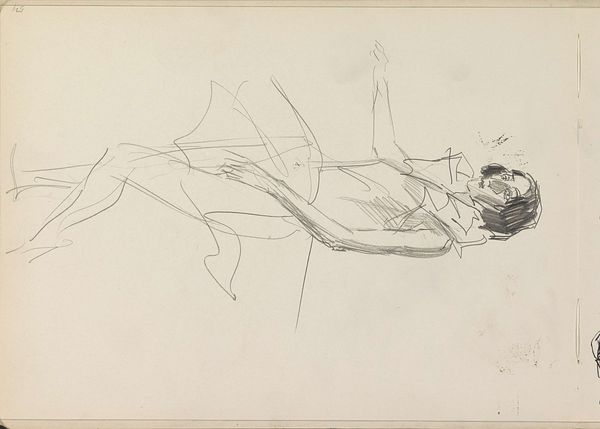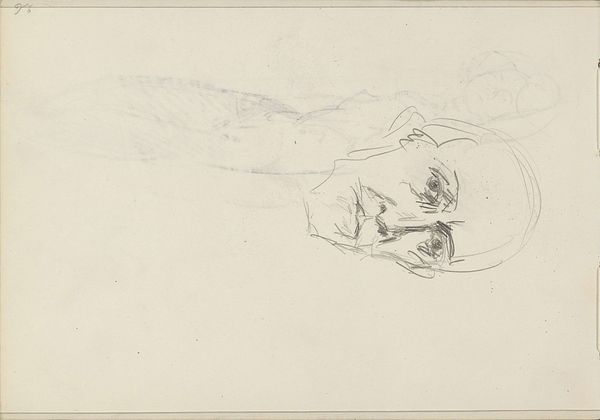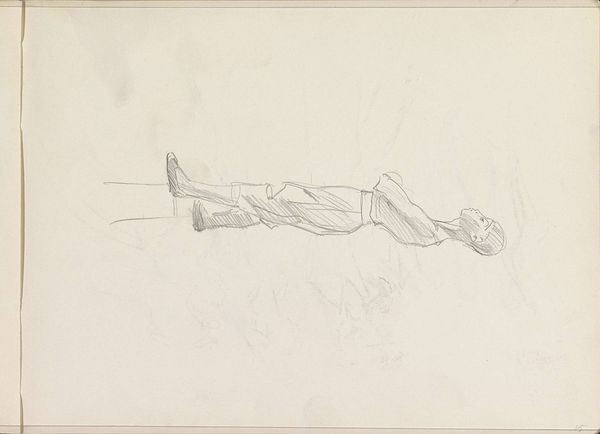
drawing, ink
#
drawing
#
ink drawing
#
figuration
#
ink
#
history-painting
#
academic-art
#
male-nude
Dimensions: 8 1/16 × 11 in. (20.5 × 27.9 cm)
Copyright: Public Domain
Curator: This is John Quincy Adams Ward's ink drawing, "Dying Warriors," created sometime between 1857 and 1860. Editor: The starkness of the ink and the dramatic poses… there's a definite sense of tragic grandeur, don't you think? Curator: Absolutely. Ward was working within an artistic and political climate steeped in anxieties around masculinity, national identity, and, of course, the looming Civil War. Drawings like these allowed artists to explore those themes allegorically. The bodies here speak to vulnerability, physical strength, defeat, even a homoerotic tension in their proximity. Editor: I see that, but the linear precision—the careful shading delineating the musculature— it recalls classical sculpture. Ward masterfully uses line weight to create depth, guiding the eye from the reclining figure to the one reaching towards the heavens. Semiotically, that upward reach signifies a certain defiance in the face of death. Curator: It is interesting to observe how he situates the figures on what seems like a rock; we must consider the symbolic implications in that setting. Is Ward referencing classical battle scenes? Are there even biblical references? Editor: Perhaps it is simply Ward engaging with the academic tradition he was trained in. The poses, the idealization of the male form— these were hallmarks of art academies then. It also functions, compositionally, to elevate and highlight his masterful treatment of the male anatomy and form. Curator: And it cannot be disregarded that, for viewers in the mid-19th century, these “warriors” evoke the real and looming specter of fratricide and war that could decimate entire generations of men from similar familial or racial backgrounds. The emotional charge extends beyond aesthetic admiration, connecting to shared national dread. Editor: It is truly intriguing how Ward employs such disciplined lines to reveal not just physical structure, but also that tension between mortal limit and a kind of striving towards transcendence. Thank you for offering such a compelling point of view, Curator: Thank you!
Comments
No comments
Be the first to comment and join the conversation on the ultimate creative platform.

